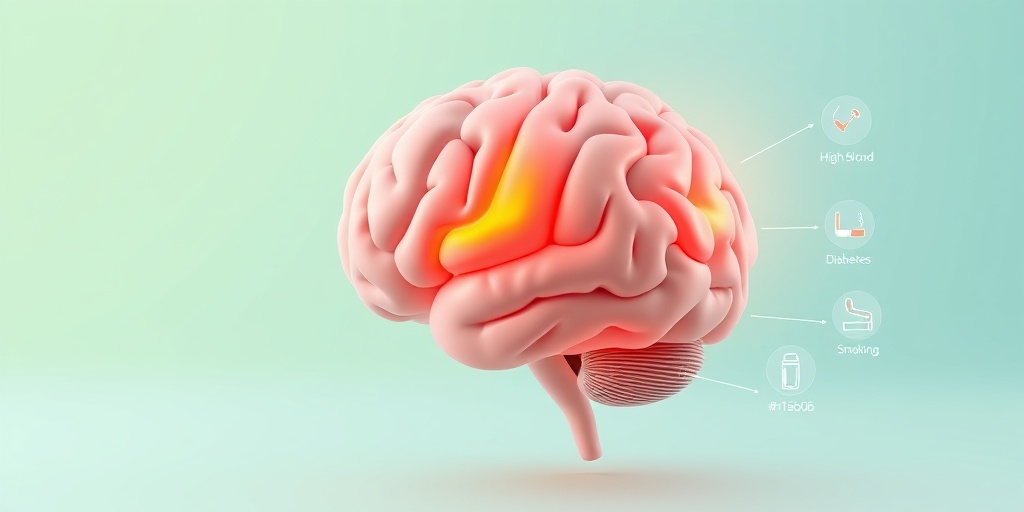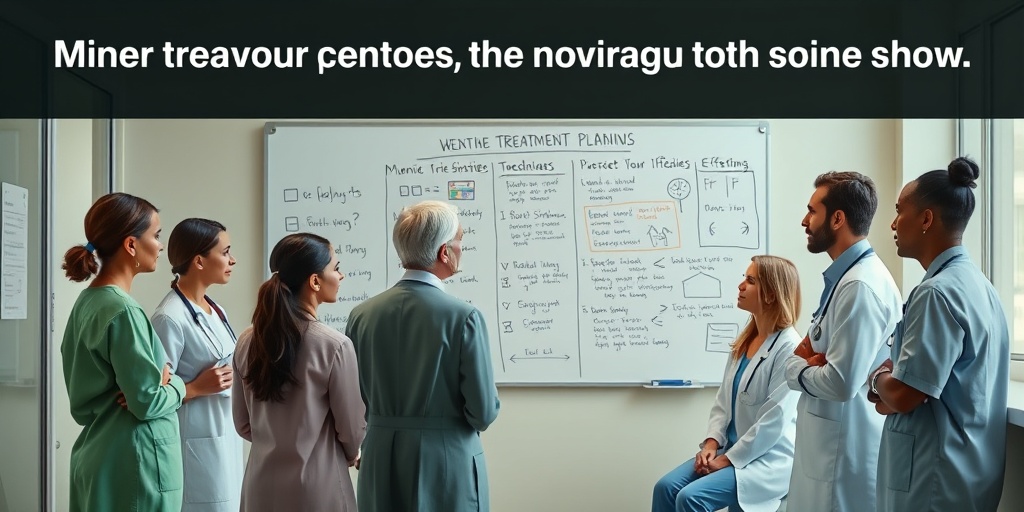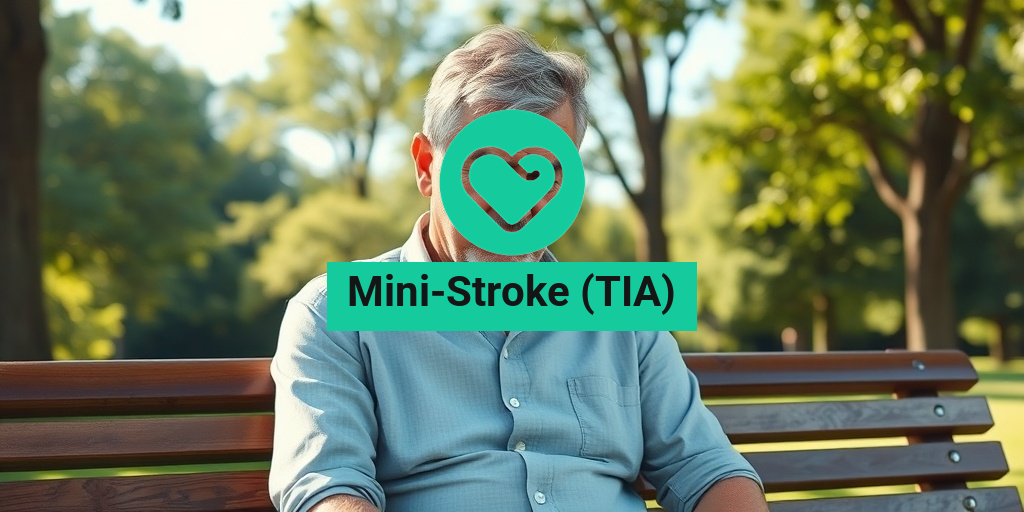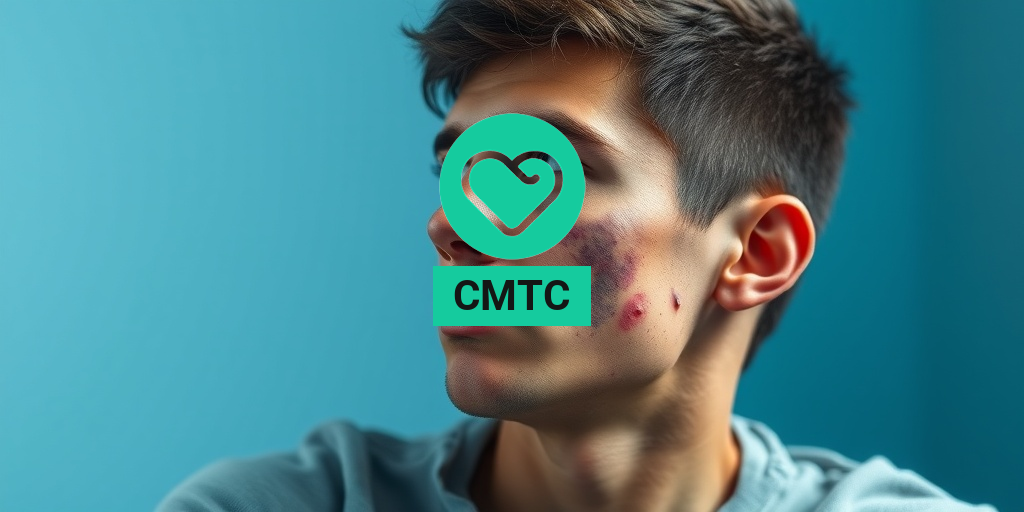What Is a Mini-Stroke?
A mini-stroke, medically known as a Transient Ischemic Attack (TIA), is a temporary period of symptoms similar to those of a stroke. Unlike a full-blown stroke, a TIA doesn’t cause permanent damage to the brain. However, it serves as a critical warning sign that you may be at risk for a future stroke. Understanding what a mini-stroke is can help you recognize its symptoms and seek timely medical attention.
Understanding the Mechanism
A TIA occurs when there is a temporary decrease in blood supply to part of the brain. This can happen due to a blood clot or a narrowing of the arteries. The symptoms of a mini-stroke typically last for a few minutes to a few hours, but they can resolve completely within 24 hours. It’s essential to treat a TIA seriously, as it can be a precursor to a more severe stroke.
Risk Factors for Mini-Strokes
Several factors can increase your risk of experiencing a mini-stroke, including:
- High blood pressure: This is one of the most significant risk factors.
- Diabetes: It can damage blood vessels and increase stroke risk.
- High cholesterol: Elevated cholesterol levels can lead to plaque buildup in arteries.
- Smoking: Tobacco use significantly increases the risk of stroke.
- Heart conditions: Atrial fibrillation and other heart issues can lead to blood clots.
Being aware of these risk factors can help you take proactive steps to reduce your chances of experiencing a mini-stroke or a full stroke in the future.
Mini-Stroke Symptoms
Recognizing the symptoms of a mini-stroke is crucial for timely intervention. The signs can vary from person to person, but they often include:
Common Symptoms of a Mini-Stroke
- Sudden numbness or weakness: This often occurs on one side of the body, affecting the face, arm, or leg.
- Confusion: Individuals may experience sudden confusion or difficulty speaking.
- Vision problems: Blurred or double vision can occur in one or both eyes.
- Dizziness or loss of balance: A person may feel unsteady or have trouble walking.
These symptoms can come and go, which is why many people may not realize they are experiencing a mini-stroke. If you or someone you know exhibits these symptoms, it’s vital to seek medical help immediately.
Acting FAST: A Critical Approach
When it comes to strokes, time is of the essence. The acronym FAST can help you remember the warning signs:
- F: Face drooping – Ask the person to smile. Does one side of the face droop?
- A: Arm weakness – Ask the person to raise both arms. Does one arm drift downward?
- S: Speech difficulty – Ask the person to repeat a simple phrase. Is their speech slurred or strange?
- T: Time to call emergency services – If you observe any of these signs, call for help immediately.
Even if the symptoms resolve quickly, it’s essential to consult a healthcare professional. A mini-stroke can indicate underlying health issues that need to be addressed to prevent a future stroke.
Recovery and Next Steps
After experiencing a mini-stroke, recovery can vary from person to person. Some may return to their normal activities within a short time, while others may require rehabilitation. It’s crucial to follow up with your healthcare provider for a thorough evaluation and to discuss potential lifestyle changes or treatments to reduce the risk of future strokes.
For more information on managing your health and understanding conditions like mini-strokes, consider visiting Yesil Health AI, a valuable resource for evidence-based health answers.
In conclusion, being informed about mini-strokes and their symptoms can empower you to take action when necessary. Remember, a mini-stroke is a serious warning sign, and recognizing the symptoms can save lives. Stay vigilant and prioritize your health! 🧠❤️

Risk Factors for Mini-Stroke (TIA)
A mini-stroke, medically known as a transient ischemic attack (TIA), is a temporary period of symptoms similar to those of a stroke. Understanding the risk factors associated with TIAs is crucial for prevention and early intervention. Here are some of the primary risk factors:
1. Age
As we age, the risk of experiencing a mini-stroke increases significantly. Individuals over the age of 55 are at a higher risk, and this risk escalates with each passing decade. It’s essential to monitor your health closely as you age.
2. High Blood Pressure
Hypertension is one of the leading causes of mini-strokes. Elevated blood pressure can damage blood vessels, making them more susceptible to blockages. Regular monitoring and management of blood pressure are vital for reducing this risk.
3. Diabetes
People with diabetes are at a greater risk for TIAs due to the damage high blood sugar levels can cause to blood vessels. Proper management of diabetes through diet, exercise, and medication can help mitigate this risk.
4. High Cholesterol
High levels of cholesterol can lead to the buildup of plaques in the arteries, restricting blood flow. This condition can increase the likelihood of a mini-stroke. Regular cholesterol screenings and a heart-healthy diet can help keep cholesterol levels in check.
5. Smoking
Smoking is a significant risk factor for many cardiovascular diseases, including TIAs. The chemicals in tobacco can damage blood vessels and reduce oxygen in the blood, increasing the risk of a mini-stroke. Quitting smoking can dramatically lower this risk.
6. Family History
If you have a family history of strokes or TIAs, your risk may be higher. Genetics can play a role in your susceptibility to these conditions, making it essential to be aware of your family’s health history.
7. Sedentary Lifestyle
A lack of physical activity can contribute to several risk factors, including obesity, high blood pressure, and high cholesterol. Engaging in regular exercise can help maintain a healthy weight and improve overall cardiovascular health.
8. Atrial Fibrillation
Atrial fibrillation (AFib) is a heart condition that causes irregular heartbeats. This can lead to blood clots forming in the heart, which can travel to the brain and cause a mini-stroke. If you have AFib, it’s crucial to work with your healthcare provider to manage this condition effectively.
Causes of Mini-Stroke (TIA)
Understanding the causes of a mini-stroke is essential for prevention and timely treatment. A TIA occurs when there is a temporary disruption of blood flow to the brain. Here are some common causes:
1. Blood Clots
The most common cause of a mini-stroke is a blood clot that temporarily blocks blood flow to the brain. This can occur due to various factors, including heart conditions like AFib or the buildup of plaque in the arteries.
2. Narrowed Arteries
Atherosclerosis, or the hardening and narrowing of arteries due to plaque buildup, can restrict blood flow. When arteries supplying blood to the brain become narrowed, it increases the risk of a TIA.
3. Embolic Events
Sometimes, a blood clot can form in another part of the body, such as the heart, and travel to the brain. This is known as an embolic event and can lead to a mini-stroke if the clot lodges in a cerebral artery.
4. Low Blood Flow
Conditions that reduce blood flow to the brain, such as severe anemia or low blood pressure, can also cause a TIA. These conditions can prevent adequate oxygen and nutrients from reaching brain cells, leading to temporary dysfunction.
5. Other Medical Conditions
Several medical conditions can increase the risk of TIAs, including heart disease, carotid artery disease, and certain blood disorders. Managing these conditions with the help of a healthcare provider is crucial for reducing the risk of a mini-stroke.
6. Lifestyle Factors
Unhealthy lifestyle choices, such as poor diet, lack of exercise, and excessive alcohol consumption, can contribute to the risk of TIAs. Making positive lifestyle changes can significantly reduce the likelihood of experiencing a mini-stroke.
Recognizing the risk factors and causes of mini-strokes is the first step toward prevention. If you or someone you know is experiencing symptoms of a TIA, such as sudden weakness, confusion, or difficulty speaking, seek medical attention immediately. 🚑

Diagnosing a Mini-Stroke
When it comes to understanding a mini-stroke (TIA), timely diagnosis is crucial. A transient ischemic attack (TIA) is often referred to as a “mini-stroke” because it presents similar symptoms but lasts for a shorter duration—typically less than 24 hours. Recognizing the signs and seeking immediate medical attention can significantly impact recovery and future stroke risk.
Recognizing the Symptoms
Symptoms of a mini-stroke can vary, but they often include:
- Sudden numbness or weakness in the face, arm, or leg, especially on one side of the body.
- Confusion or trouble speaking or understanding speech.
- Vision problems in one or both eyes.
- Dizziness, loss of balance, or coordination issues.
If you or someone you know experiences these symptoms, it’s essential to act FAST:
- Face: Ask the person to smile. Does one side of the face droop?
- Arms: Ask the person to raise both arms. Does one arm drift downward?
- Speech: Ask the person to repeat a simple phrase. Is their speech slurred or strange?
- Time: If you observe any of these signs, call emergency services immediately.
Medical Evaluation
Upon arrival at the hospital, healthcare professionals will conduct a thorough evaluation. This may include:
- Physical Examination: A doctor will assess neurological function, checking reflexes, coordination, and sensory responses.
- Imaging Tests: CT scans or MRIs are often performed to visualize the brain and identify any areas affected by reduced blood flow.
- Blood Tests: These tests help determine cholesterol levels, blood sugar levels, and other factors that could contribute to stroke risk.
In some cases, additional tests such as an ultrasound of the carotid arteries or an electrocardiogram (ECG) may be necessary to assess heart health and blood flow.
Mini-Stroke Treatment Options
Once diagnosed with a mini-stroke (TIA), the focus shifts to treatment and prevention. The primary goal is to reduce the risk of a full-blown stroke in the future.
Medications
Several medications may be prescribed to manage risk factors and prevent future strokes:
- Antiplatelet Agents: Medications like aspirin or clopidogrel help prevent blood clots from forming.
- Anticoagulants: In some cases, blood thinners such as warfarin or newer agents like apixaban may be recommended, especially if there are underlying heart conditions.
Lifestyle Changes
In addition to medication, making lifestyle changes can significantly impact recovery and prevention:
- Healthy Diet: A balanced diet rich in fruits, vegetables, whole grains, and lean proteins can help manage cholesterol and blood pressure.
- Regular Exercise: Engaging in physical activity can improve cardiovascular health and reduce stroke risk.
- Quitting Smoking: If you smoke, seeking help to quit can greatly reduce your risk of future strokes.
- Limiting Alcohol: Moderation is key; excessive alcohol consumption can increase stroke risk.
Rehabilitation
For some individuals, rehabilitation may be necessary to regain lost skills or improve quality of life. This can include:
- Physical Therapy: Helps improve mobility and strength.
- Speech Therapy: Assists with communication difficulties.
- Occupational Therapy: Aids in relearning daily activities and improving independence.
Understanding the implications of a mini-stroke is vital for both patients and their families. Early intervention and a comprehensive treatment plan can lead to a better prognosis and a healthier future. 🌟

Preventing a Mini-Stroke
Understanding how to prevent a mini-stroke, also known as a Transient Ischemic Attack (TIA), is crucial for maintaining your health and well-being. A TIA is often a warning sign that a more severe stroke could occur in the future. Fortunately, there are several proactive steps you can take to reduce your risk.
Know Your Risk Factors
Identifying and managing risk factors is the first step in preventing a mini-stroke. Some common risk factors include:
- High Blood Pressure: This is one of the leading causes of strokes. Regular monitoring and management through lifestyle changes or medication can significantly lower your risk.
- Diabetes: Keeping your blood sugar levels in check is essential. Work with your healthcare provider to create a management plan.
- High Cholesterol: Elevated cholesterol levels can lead to plaque buildup in your arteries. A healthy diet and medication can help manage this.
- Smoking: Tobacco use increases the risk of stroke. Quitting smoking can greatly improve your overall health.
- Obesity: Maintaining a healthy weight through diet and exercise can reduce your risk of a mini-stroke.
Adopt a Healthy Lifestyle
Making lifestyle changes can have a profound impact on your stroke risk. Here are some effective strategies:
- Eat a Balanced Diet: Focus on fruits, vegetables, whole grains, and lean proteins. The Mediterranean diet, rich in healthy fats like olive oil and fish, is particularly beneficial.
- Exercise Regularly: Aim for at least 150 minutes of moderate aerobic activity each week. Activities like walking, swimming, or cycling can improve cardiovascular health.
- Limit Alcohol Consumption: If you drink alcohol, do so in moderation. Excessive drinking can increase blood pressure and contribute to stroke risk.
- Manage Stress: Chronic stress can negatively affect your health. Techniques such as yoga, meditation, or deep-breathing exercises can help manage stress levels.
Regular Health Check-Ups
Regular visits to your healthcare provider are essential for monitoring your health. During these check-ups, discuss your risk factors and any symptoms you may be experiencing. Early detection and intervention can prevent a mini-stroke from occurring.
Medications and Treatments
If you have existing health conditions, your doctor may prescribe medications to help manage your risk. Common medications include:
- Antiplatelet Agents: Medications like aspirin can help prevent blood clots.
- Anticoagulants: These medications help prevent blood clots from forming.
- Statins: Used to lower cholesterol levels and reduce the risk of stroke.
Always consult with your healthcare provider before starting or stopping any medication.
Living After a Mini-Stroke
Experiencing a mini-stroke can be a life-altering event, but many individuals go on to lead fulfilling lives. Understanding how to navigate life after a mini-stroke (TIA) is essential for recovery and long-term health.
Recognizing Symptoms and Seeking Help
After a mini-stroke, it’s vital to be aware of any lingering symptoms. Common symptoms may include:
- Weakness or Numbness: Often on one side of the body, this can affect your ability to move or feel.
- Speech Difficulties: You may experience slurred speech or difficulty finding words.
- Vision Problems: Blurred or double vision can occur.
If you notice any of these symptoms, seek medical attention immediately. Quick action can prevent further complications.
Rehabilitation and Recovery
Recovery from a mini-stroke often involves rehabilitation. Depending on your symptoms, your healthcare provider may recommend:
- Physical Therapy: To help regain strength and mobility.
- Speech Therapy: To improve communication skills.
- Occupational Therapy: To assist with daily activities and improve quality of life.
Participating in rehabilitation can significantly enhance your recovery process and help you regain independence.
Emotional and Mental Health
Living after a mini-stroke can also take an emotional toll. It’s common to experience feelings of anxiety or depression. Here are some tips to support your mental health:
- Stay Connected: Engage with friends and family for emotional support.
- Join Support Groups: Connecting with others who have experienced a mini-stroke can provide comfort and understanding.
- Seek Professional Help: A mental health professional can help you navigate your feelings and develop coping strategies.
Making Lifestyle Adjustments
Adopting a healthier lifestyle is crucial after a mini-stroke. Focus on:
- Nutrition: Continue to eat a balanced diet rich in nutrients.
- Exercise: Engage in regular physical activity as recommended by your healthcare provider.
- Regular Check-Ups: Keep up with medical appointments to monitor your health.
By making these adjustments, you can significantly reduce your risk of future strokes and improve your overall quality of life. 🌟

Frequently Asked Questions about Mini-Stroke (TIA)
What is a Mini-Stroke (TIA)?
A Mini-Stroke, also known as a Transient Ischemic Attack (TIA), is a temporary period of symptoms similar to those of a stroke. It occurs when there is a temporary decrease in blood supply to part of the brain, leading to brief neurological dysfunction. Unlike a full stroke, the symptoms of a TIA typically resolve within a few minutes to hours.
What are the common symptoms of a Mini-Stroke (TIA)?
- Sudden numbness or weakness in the face, arm, or leg, especially on one side of the body.
- Confusion or trouble speaking or understanding speech.
- Vision problems in one or both eyes.
- Dizziness or loss of balance and coordination.
How is a Mini-Stroke (TIA) diagnosed?
Diagnosis typically involves a physical examination, medical history review, and imaging tests such as a CT scan or MRI to rule out a full stroke. Doctors may also conduct blood tests and other assessments to determine the underlying cause.
What treatments are available for Mini-Stroke (TIA)?
Treatment for a Mini-Stroke focuses on preventing future strokes. This may include:
- Medications such as antiplatelet agents or anticoagulants.
- Lifestyle changes like diet modification, exercise, and smoking cessation.
- Medical procedures to address underlying conditions, such as carotid endarterectomy or angioplasty.
What is the recovery process after a Mini-Stroke (TIA)?
Recovery from a Mini-Stroke can vary from person to person. Many individuals experience a full recovery, but some may have lingering effects. Rehabilitation may include physical therapy, occupational therapy, and speech therapy to help regain lost skills.
Can a Mini-Stroke (TIA) lead to memory loss?
Yes, some individuals may experience memory loss or cognitive difficulties following a Mini-Stroke. It is important to discuss any concerns with a healthcare provider, who can recommend appropriate evaluations and interventions.
How can I reduce my risk of having a Mini-Stroke (TIA)?
To lower the risk of a Mini-Stroke, consider the following:
- Manage chronic conditions such as hypertension, diabetes, and high cholesterol.
- Maintain a healthy lifestyle through regular exercise and a balanced diet.
- Avoid smoking and limit alcohol consumption.
When should I seek medical attention for a Mini-Stroke (TIA)?
If you or someone else experiences symptoms of a Mini-Stroke, it is crucial to seek immediate medical attention. Even if symptoms resolve quickly, a TIA is a warning sign of a potential future stroke.
Are there support groups for Mini-Stroke (TIA) survivors?
Yes, there are various support groups available for individuals who have experienced a Mini-Stroke. These groups provide a platform for sharing experiences, coping strategies, and emotional support. Check with local hospitals or stroke associations for resources in your area.




